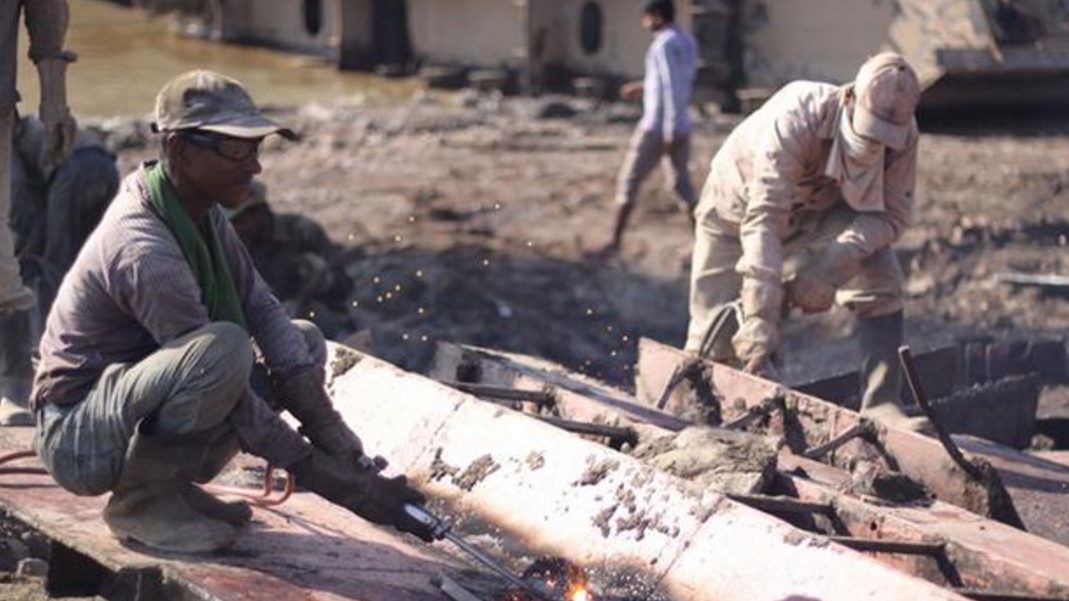
Blue Ocean
Environmental, the quest by locally connected environmentalist, entrepreneur
and fishmonger Frank Allen to clean the world’s oceans, went online last
weekend.
Allen launched the
website — blueoceanenviro.com — to help call attention to ocean debris and
abandoned vessels, starting with the fishing boat Cap’n Oscar at the Port of
Astoria.
“Awareness is the
issue,” said Allen, who is energetic, and at times frenetic, in his passion for
oceans and rivers. “We have to let people know what’s going on.
“Since day one of
mankind, we have used the oceans as a waste site.”
Allen is mostly
known for Live Online Seafood, a company he created a decade ago, recycling
fish heads, collars and other scraps not used by processors in Alaska, and
shipping them to Asia for use in other foods.

Starting locally
Along with Blue
Ocean Environmental’s website, Allen has created a GoFundMe page seeking
$70,000 to recycle the Cap’n Oscar. Allen sees the abandoned 69-foot fishing
boat as a pilot in his plan to clean the region’s — and eventually, the world’s
— waterways of derelict vessels.
Allen came to the
Port about three years ago, proposing an environmentally safe way of
dismantling boats and ships at North Tongue Point and shipping metals to steel
mills in Oregon and Washington state. The practice is usually associated with
“shipbreaking,” a term used to describe the large-scale, haphazard dismantling
of vessels in places like Alang, India, and Galveston, Texas.
Allen wanted to
prove the environmental safety of his methods using the Cap’n Oscar, with hopes
of developing Tongue Point into a larger ship-dismantling and training center
that could be recreated around the country.
But his proposal
never came to fruition, and the Cap’n Oscar sank multiple times before the Port
had the boat taken out of the water and stored in one of the hangars at North
Tongue Point.
“It’s the best site
in the world to do this project, period,” Allen said. “And Clatsop County needs
the work. And that can be our flagship site.”
Allen said any
extra from the Cap’n Oscar cleanup fundraiser would go into more public
exposure, courting investors to help with ship-dismantling and a separate
GoFundMe page he created seeking $50,000 to survey the rocket debris from the
Falcon 9, a reusable rocket that crashed off the California coast while
attempting to land on a barge at sea. The rocket was built by Space Exploration
Technologies Corp., a company founded by Tesla Motors CEO Elon Musk developing
rocket technology to reduce space travel costs.
“I like Elon Musk’s
innovation, but he has to clean up his rockets, they have very harmful
materials,” Allen said. “We gotta stop trashing the oceans.”

Going regional
Allen’s efforts to
clean up the Cap’n Oscar come as the state Marine Board has applied to the
National Oceanic and Atmospheric Administration’s Marine Debris Program for
money to clean up the commercial fishing vessel Western, which sank near a
public dock in Coos Bay.
“The hard lesson
the Cap’n Oscar taught us was that it is much better to invest in disposition
of a derelict vessel while there is opportunity to do so,” read a letter of
support for the state’s application written by Matt McGrath, the Port’s
operations manager. “Waiting for a vessel to founder only serves to exponentially
increase costs, environmental damages and public distrust.”
Meg Gardner, the
environmental programs coordinator for the state Marine Board, said the state’s
application specifically seeks to clean up the Western, but would also help
form the Abandoned and Derelict Commercial Vessel Task Force specific to the
Oregon Coast.
Gardner said
Oregon’s abandoned and derelict boat removal fund pales in comparison to
Washington’s.
While the cost of
removing a recreational boat can run about $2,500, Gardner said, the cost for a
commercial boat can reach $20,000. And while both states have a fairly robust
program for removing derelict recreational boats, “there’s really no good
resource to remove vessels of (a large) size when they’re rotting and not in
good condition anymore,” she said.

Hundreds of vessels
After Oregon and
Washington spent more than $22 million cleaning up the sunken vessel Davy
Crockett near Vancouver, Washington, in 2011, the states created the Columbia
River Derelict Vessel Task Force, which identified 40 vessels of concern, many
of them more than 100 feet long and with unknown levels of pollution.
A derelict vessel
task force in Washington estimated more than 200 abandoned vessels in the
state. Allen estimates about 300 in Oregon.
“To take care of
all the derelict vessels in Oregon would be $30 million,” Allen said. “They
spent that on the Davy Crockett.”
After taking care
of abandoned vessels, Allen said a cradle-to-grave process should be created
for each active ship to account for the eventual cost of disposal.
“If you do this
right, and put green recycling shipyards around the world, you’ll create millions
of sustainable jobs,” Allen said.
Source: daily astorian.
31 March 2016





